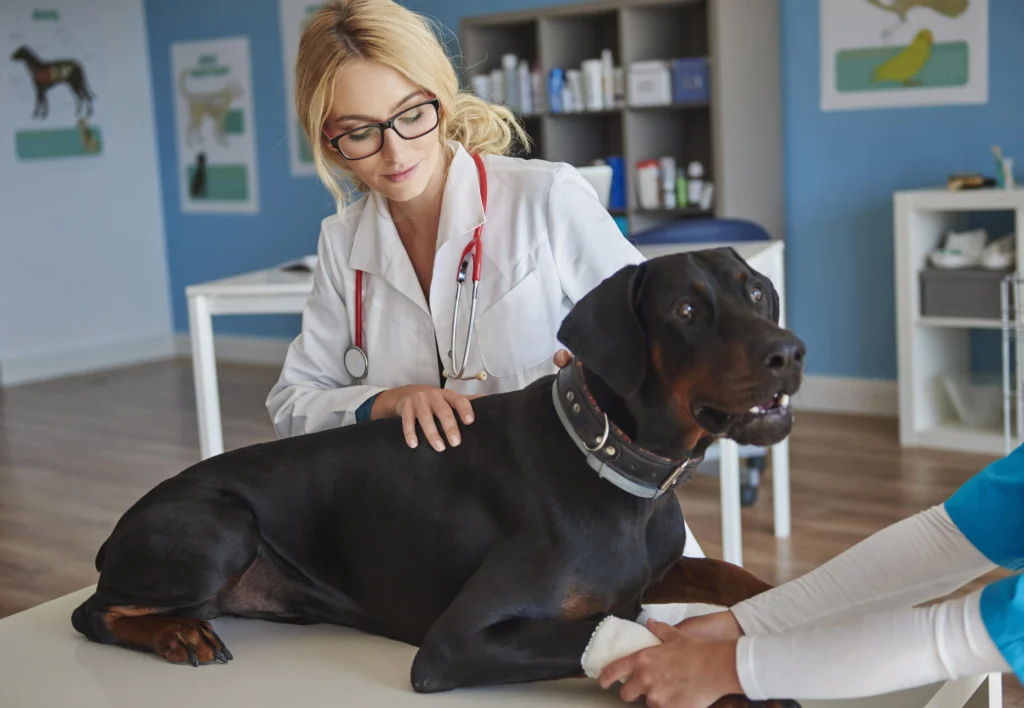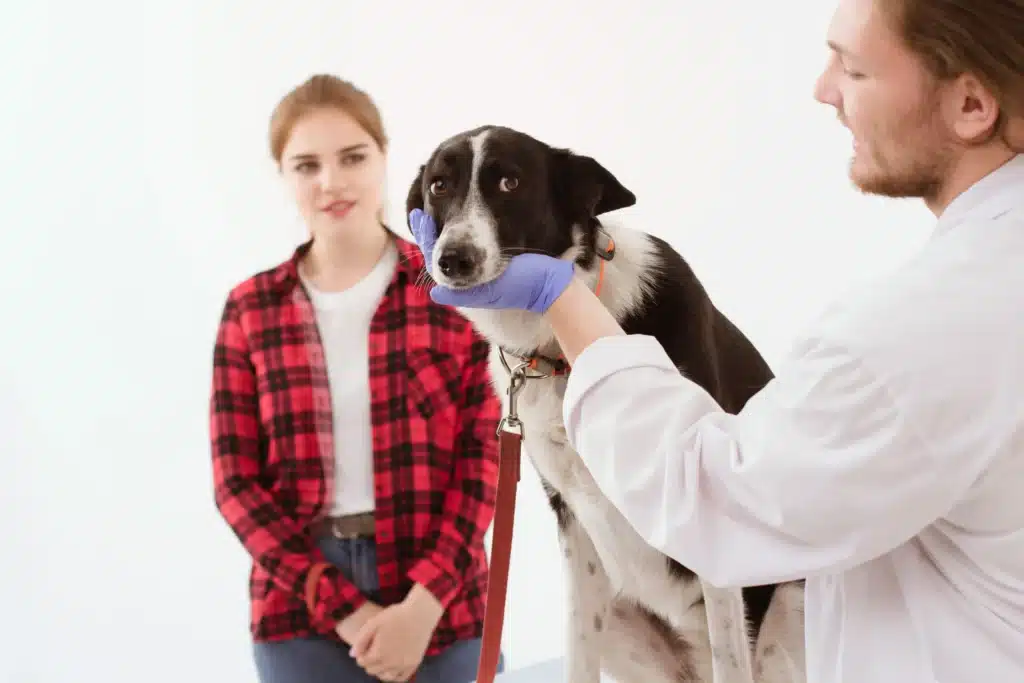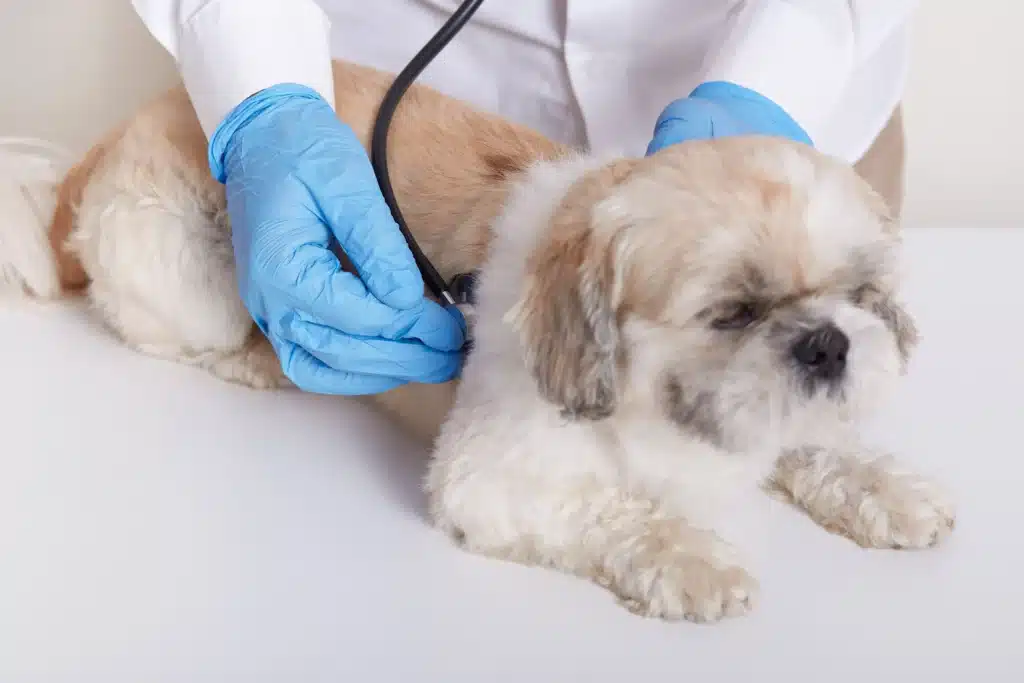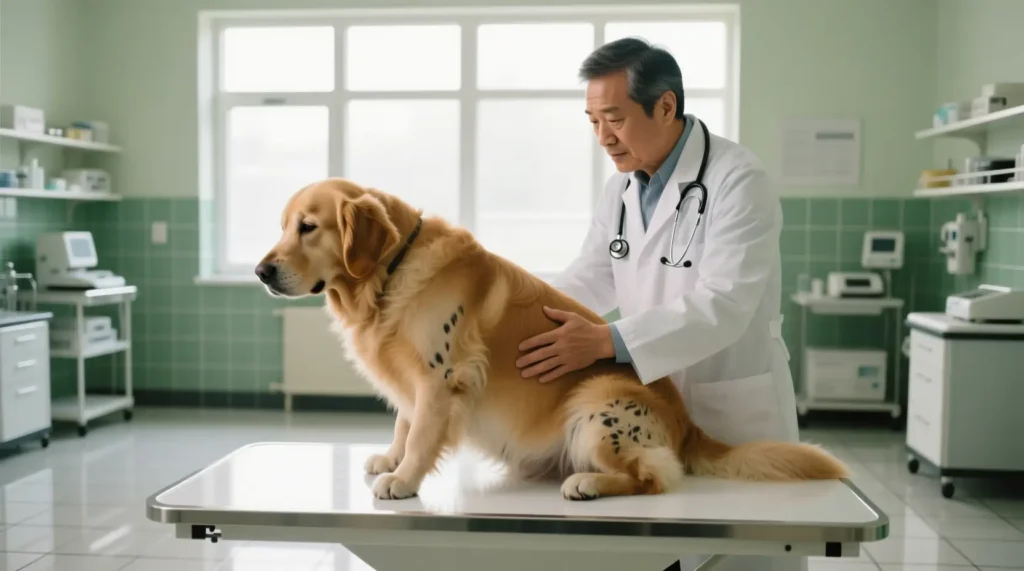Cushing’s disease, medically called canine hyperadrenocorticism (HAC), is a hormonal disorder caused by excess cortisol production by the adrenal glands.
According to the Merck Veterinary Manual, about 85% of cases are pituitary-dependent (PDH), and 15%–20% are adrenal-dependent (ADH) due to an adrenal tumor.
Cortisol regulates stress, metabolism, and immune function but in excess, it damages tissues and organs. Dogs with Cushing’s often show:
- Increased thirst and urination (PU/PD)
- Panting and hunger
- Pot-bellied abdomen
- Hair thinning or symmetrical hair loss
- Muscle weakness
- Thin skin, bruising, or slow healing
- Recurrent urinary or skin infections
The condition is not contagious — it cannot spread to humans or other pets because it is an internal endocrine imbalance, not a viral or bacterial infection.
Types and Causes of Cushing’s Disease
| Type | Cause | Frequency | Treatment Focus |
| Pituitary-Dependent (PDH) | Small benign tumor in the pituitary gland overstimulating the adrenals via ACTH | ~85% | Medical therapy (Trilostane / Vetoryl®) |
| Adrenal-Dependent (ADH) | Tumor directly on the adrenal gland | ~15% | Surgery if benign; medical if malignant |
| Iatrogenic | Long-term use of corticosteroid medications (e.g., prednisone) | Less common | Gradual withdrawal of steroid |
How Is Cushing’s Diagnosed?
Diagnosing Cushing’s disease requires both clinical suspicion and endocrine testing. No single test is perfect; results must be interpreted in context.
Diagnostic Steps:
- Initial evaluation includes history, physical exam, and basic lab tests.
- Common findings: high ALP, cholesterol, and glucose; low urine specific gravity (<1.020).
- Screening tests:
- Low-Dose Dexamethasone Suppression (LDDS) Tests are most accurate for stable dogs.
- ACTH Stimulation Tests are used for concurrent illness or iatrogenic Cushing’s.
- Differentiation tests:
- High-dose dexamethasone suppression, plasma ACTH, or abdominal ultrasound to distinguish PDH vs ADH.

Standard Medical Treatment Options
1. Trilostane (Vetoryl® Capsules) — First-Line FDA-Approved Drug
- Mechanism: Inhibits 3β-hydroxysteroid dehydrogenase enzyme, reducing cortisol production safely and reversibly.
- Dosage: 2.2–6.7 mg/kg once daily with food; some dogs require twice-daily dosing.
- Response: Energy, appetite, and thirst improve first; coat and muscle tone over weeks.
- Monitoring: ACTH stimulation test 10–14 days after initiation, then every 3 months.
According to FDA Guidance, trilostane provides a safer alternative to older drugs like mitotane, with a <2 % risk of adrenal necrosis when monitored correctly.
2. Mitotane (Lysodren®) — Adrenal Cytotoxic Therapy
- Mechanism: Causes necrosis of cortisol-producing adrenal cells.
- Drawback: High risk of hypoadrenocorticism; requires strict monitoring.
- Current use: Reserved for dogs intolerant to trilostane.
3. Surgical Treatment
- Adrenalectomy: Recommended for localized adrenal tumors that are benign.
- Hypophysectomy (Pituitary surgery): Performed only in advanced referral centers.
- Radiation therapy: Effective for pituitary macroadenomas causing neurologic signs.
Studies from PubMed – Nagata et al., 2017 show that treated dogs live significantly longer than untreated ones (median > 900 days with trilostane vs ≈ 500 days untreated).
Supportive & Lifestyle Management
Even after cortisol levels are controlled, supportive care improves comfort and prevents relapse:
Diet & Nutrition
- Feed a moderate-fat, high-quality protein diet.
- Include antioxidants and omega-3s for skin and coat health.
- Maintain consistent meal timing to support cortisol rhythm.
For More details Read also: What to Feed a Dog With Cushing’s Disease: Vet-Recommended Diet Guide
Exercise & Routine
- Gentle daily exercise to rebuild muscle and reduce obesity.
- Avoid heat stress; Cushing’s dogs have reduced heat tolerance.
Regular Monitoring
- Routine urinalysis, blood pressure, liver enzymes, and ACTH test every 3–6 months.
- Adjust medication if new symptoms (fatigue, vomiting, loss of appetite) occur.
Natural & Alternative Treatments (Complementary, Not Curative)
There is no natural cure for Cushing’s disease, but certain adjuncts may improve comfort under veterinary supervision.
| Natural / Alternative Option | Purpose | Evidence |
| Melatonin + Lignans | May suppress adrenal estrogen & support mild PDH | Weak evidence (NCBI reviews) |
| Milk Thistle (Silymarin) | Liver support during medication therapy | Widely used, safe as supplement |
| Fish Oil (Omega-3) | Reduces inflammation & skin irritation | Supported by WSAVA & AVMA nutrition reports |
| Acupuncture / TCVM | May reduce stress, improve appetite | Anecdotal only; no hormonal correction |
| Herbal formulas (Licorice root, dandelion) | Claimed cortisol modulation | Unverified; avoid unsupervised use |
Veterinarians caution that natural methods cannot replace medical therapy; they serve only as complementary strategies to improve comfort, not to regulate cortisol.
Is Cushing’s Disease Contagious?
Absolutely not.
Cushing’s is a hormonal disorder, not an infectious one. It arises from internal imbalance — either a pituitary tumor or prolonged steroid use.
No form of contact, shared bedding, food, or fluids can transmit it.
Life Expectancy & Prognosis
With consistent treatment, dogs can live 2–4 years or longer after diagnosis, often maintaining a normal lifestyle.
Untreated, the disease leads to hypertension, liver enlargement, and higher infection risk — significantly shortening lifespan.
Study Reference: Nagata N et al., J Vet Intern Med (2017) – dogs treated with trilostane lived > 900 days, while untreated averaged ≈ 500 days.
Key Takeaways
Cushing’s disease is not contagious
Trilostane (Vetoryl®) remains the safest and most effective treatment
Regular ACTH monitoring prevents over-suppression
Balanced diet and moderate exercise support recovery
Natural therapies can complement but not replace medical treatment


